
5 treasures in Seal Bay
It’s not just sea lions to look for at this world-class destination. Here’s some tips from our park insider.
For a nature-based tourism experience like no other, head down to Seal Bay on the south coast of South Australia’s Kangaroo Island.
Just a short flight or ferry ride from the mainland, KI has a reputation for its rugged, natural beauty and its authentic wildlife encounters. And Seal Bay is no exception.
With a stunning coastline and windswept cliffs looking out to the Southern Ocean, there’s plenty to point your camera at. But it’s the colony of Australian sea lions that really steals the show.
Unique to SA and Western Australia, the species is endangered and has a total population of approximately 10,500, with about 800 of these living at Seal Bay.
It’s home to the third largest colony of these cute dog-like creatures and is one of the only places in the world where you can see them close up. Which is especially adorable during breeding season, as you’ll get to see new pups play on the sand and in the shallows with their newborn friends.
Senior Guide Melanie Stonnill is lucky enough to see these magnificent sights every day. Here are her insider tips for you to look out for on your next visit:
1. Australian sea lions
Obviously the star attraction at Seal Bay, these gorgeous animals are one of the rarest species in the world. This picturesque location has been home to a population of Australian sea lions for thousands of years, and given theirendangered status, is an important site for research and conservation.
It’s hard to go past sea lions’ playful nature and cute appearance – just watching them can keepyou entertained for what feels like hours. Don’t just look towards the water though, in the warmer monthsthey tend to lap up the sun on the shore and in the shallows, but when it’s cooler they wander up the sanddunes into the saltbush, cuddling up with their mates for warmth.
Insider tip: Look for the sandy trails around you – that’s how far some of the sea lions have venturedup the dunes.
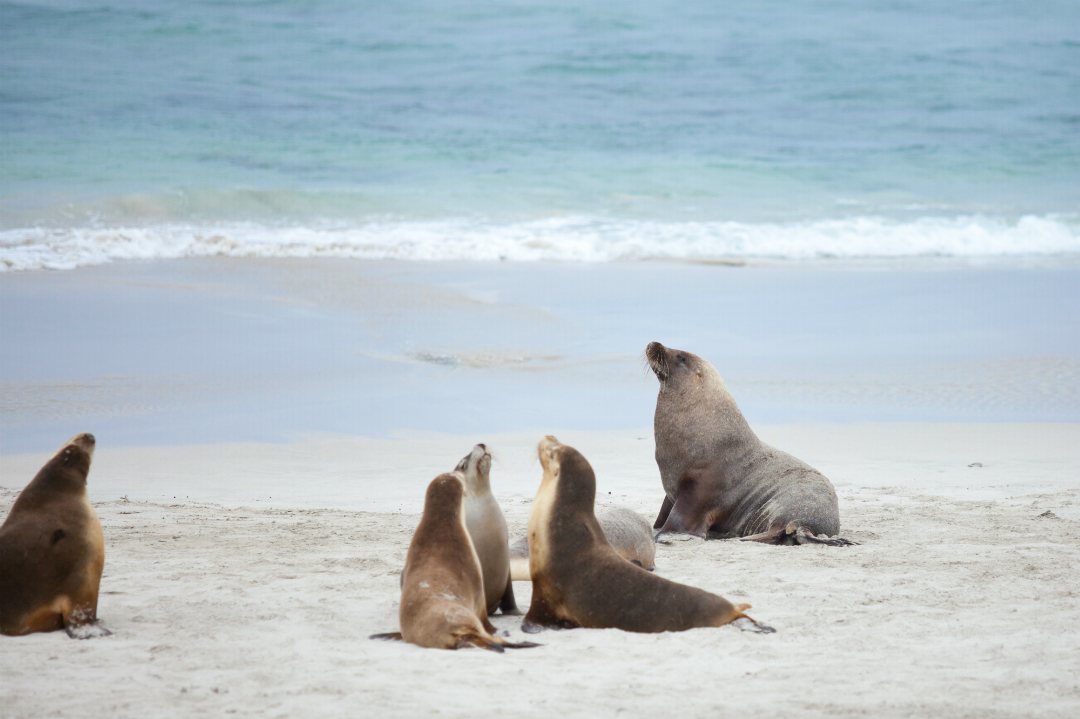
2. Pups
You’d be hard pressed to find a cuter animal than a sea lion pup. When they’re born they have achocolate brown hair coat which they shed when they’re about six months old. Within a week a mum sea lionleaves her pup on-shore while she heads out to sea to find food. You can often spot a group of young pups hangingout together while their mums are away – almost like a kindergarten group.
From two months of age a sea lion can recognise its mum’s call. Mums’ voices sound deeper while theirpups’ voices are much squeakier and high-pitched. At about six weeks of age they will go into the water tolearn to swim, usually on a calm day.
Insider tip: You can often tell if a sea lion pup is learning to swim – just like humans, they don’tlike to put their head underwater while they’re still learning.
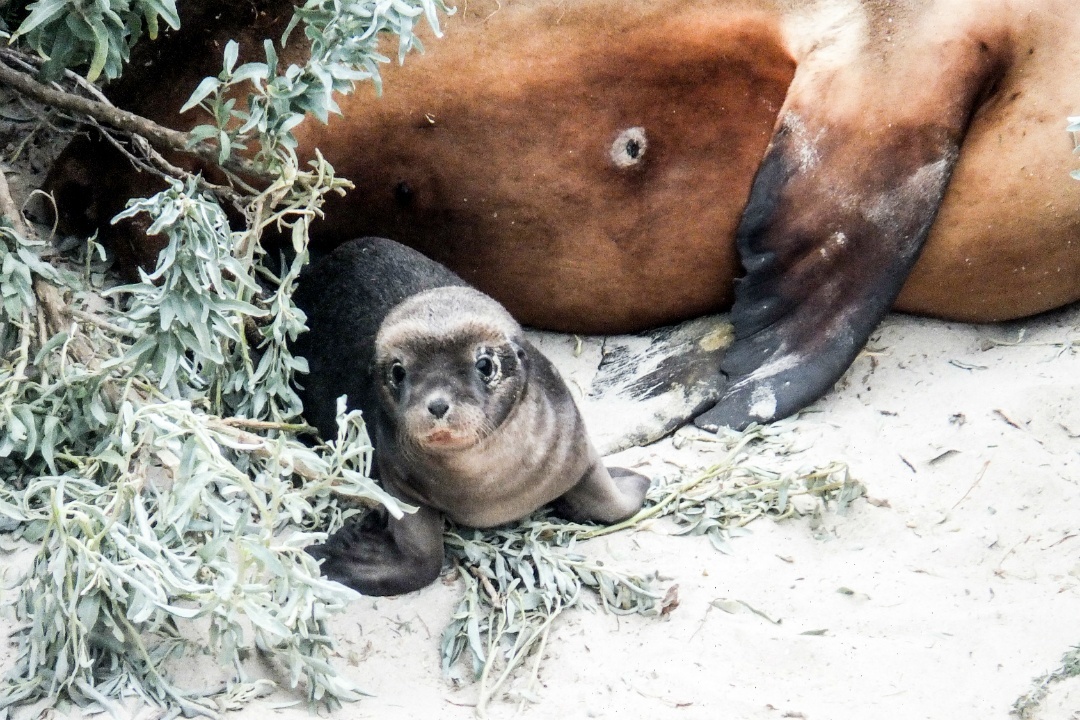
3. The boardwalk
Take a walk on the 450-metre boardwalk to get up close and personal with the sea lions. Be sure to look down –the shady spot under the boardwalk is a perfect place for them to laze around. It’s not just anywhere thatyou can see sea lions in the wild just metres away from you, so keep your camera handy for some great close-upphotos. For a more thorough experience, book in for a guided tour with one of the park’s sea lion experts.
Insider tip: See if you can tell the difference between the males and females. Males, known as ‘bulls’,are significantly bigger – reaching up to 350 – 400 kilograms before mating season begins – and areusually brown in colour, while females ‘cows’ have a more slender face and a lighter, greyish hair withcreamy chests.
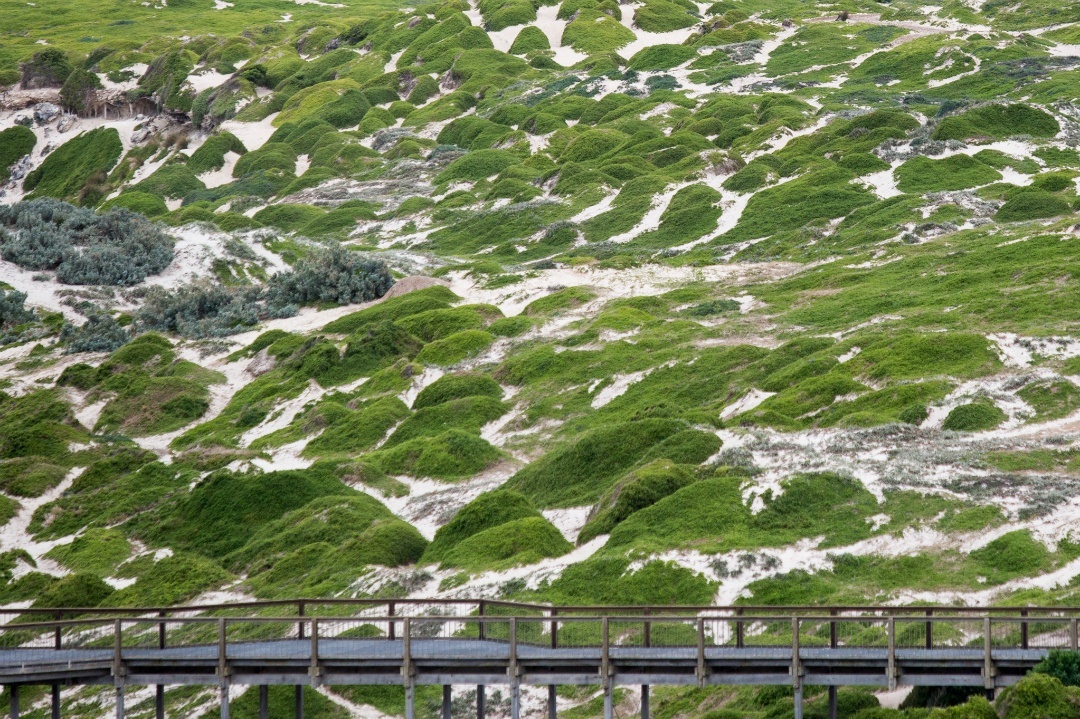
4. The lookout
Venture up to the lookout for spectacular views across Seal Bay. Sea lions aside, it’s a beautiful coastallocation, with nothing but open sea as far as the eye can see. If you kept travelling south from here you’deventually reach Antarctica!
But bringing you back to the views in front of you, to the left of the lookout is what’s known as EasternProtection Area 1, which is only accessible to researchers who observe and track the sea lions. Almost a quarter ofthe pups born for the 2017⁄18 breeding season have been in this area. The breeding season is close to an end, witha total of 228 pups born to date.If you look to the right you can see Nobby Island, and in between is where all theaction is – the sea lions.
Insider tip: Look at the rock pools to the left of the lookout. It’s here that you’ll often see pupsprotected from the waves, jumping in and out of the water.
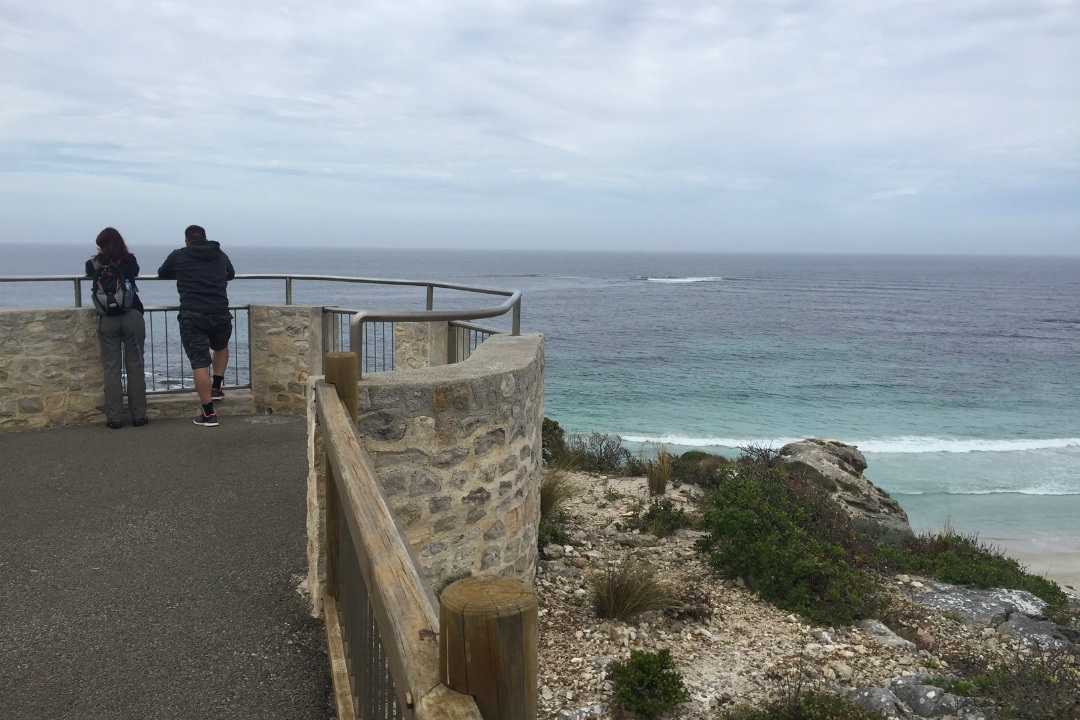
5. Humpback whale skeleton
When you’re on the boardwalk, keep an eye out for the skeletal remains of a juvenile humpback whale lying inthe sand. Measuring about 10 metres in length, the whale washed up on the shore east of the lookout in a winterstorm back in 1984. To preserve the skeleton, it was moved bone by bone to its current location in 1996.
Insider tip: Sea lion pups like to play with the humpback whale bones, messing them up and leaving Seal Bay staff totidy up after them, putting the bones back into their correct position.
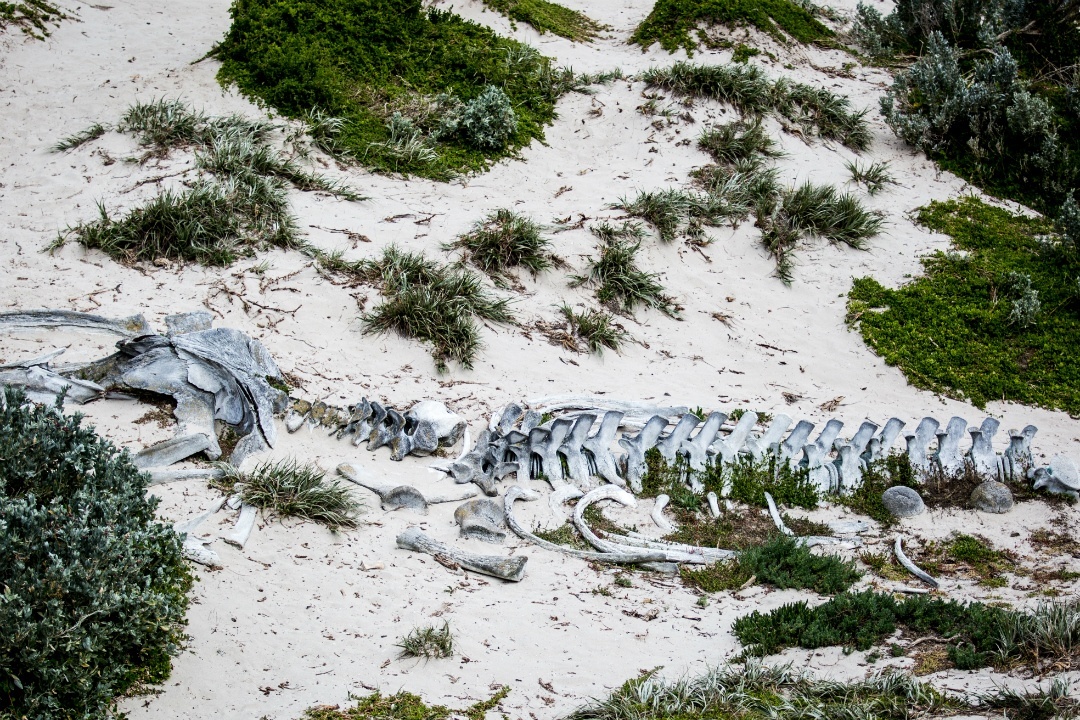
To hear more from Senior Guide Melanie Stonnill be sure to check out ourInsider Guide – Seal Bay, or read our blog story about sea lions and their pups.